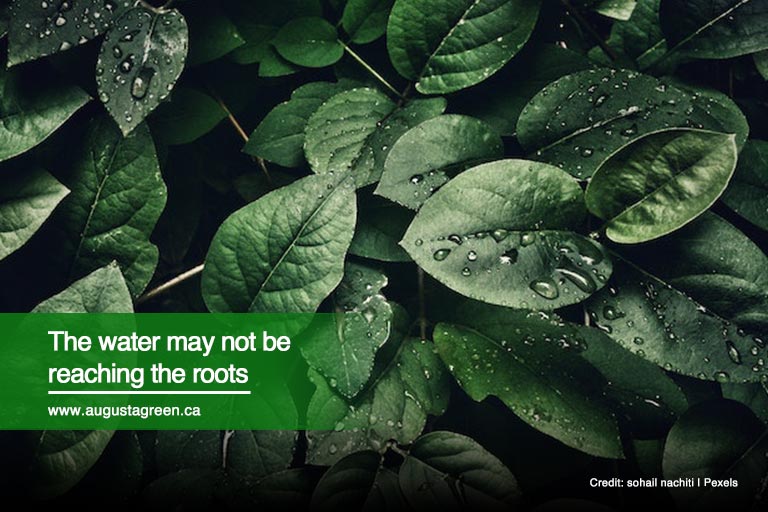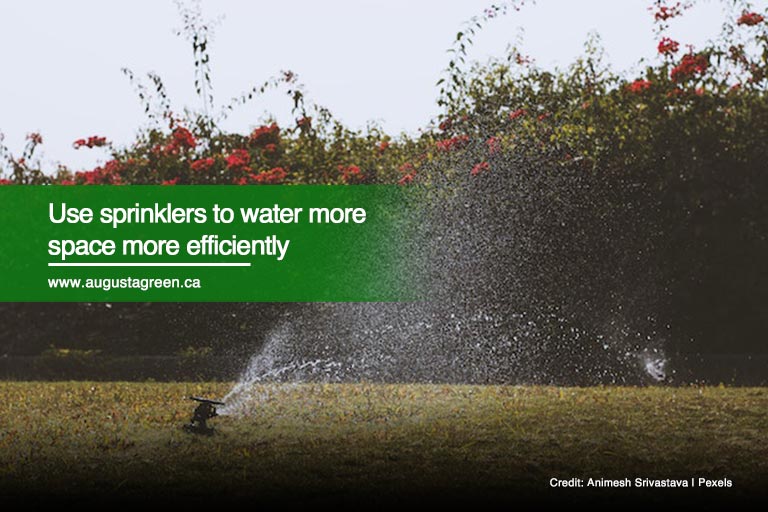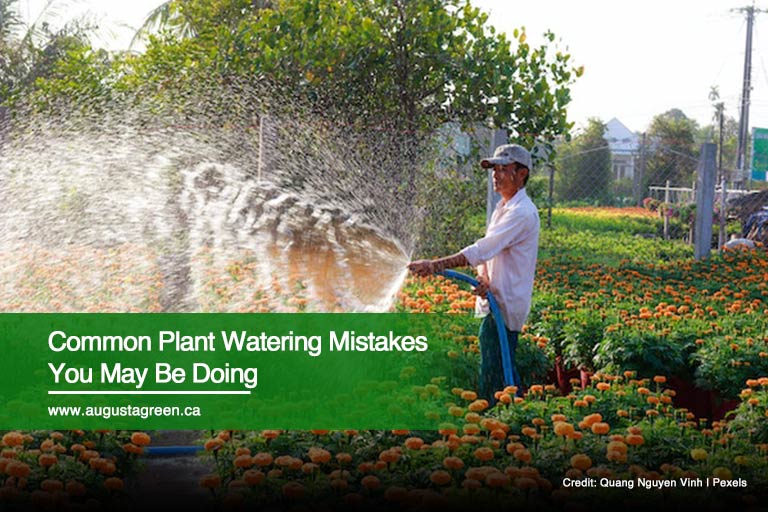Many people believe that their homes appear nicer with an expansive green lawn and a few vibrant flowers, but every Canadian homeowner who has ever had a lawn knows that it does not come cheap. Plants require water to survive, but is watering the plants enough to keep them healthy and thriving? Turns out, it’s not that simple. Just because you water plants regularly does not mean that you are watering them well. Garden watering mistakes can result in plant loss.
Plant Watering Mistakes to Avoid
The condition of your garden depends on proper water management. Plant growth can be hampered when the soil is waterlogged. The soil should just be moist enough to allow your plants to thrive well, yet maintaining a garden can be difficult.
You can preserve the appearance and health of your lawn by knowing how, when, and for how long you should water it. Understanding exactly what is improper watering could be the solution to managing your water costs while keeping your plants alive.
- Overwatering
Overwatering your grass is a common and expensive mistake. As enthusiastic gardeners, many like watching plants develop so much that they frequently drown them by overwatering. Excessive watering might end up killing your lawn. It depletes your soil’s oxygen supply, which is essential for deep root development and general grass health. If you are unaware if you’re overwatering, be on the look for signs of overwatered plants, such as discolouring, wilting, and rotting among others.
Sometimes, overwatering can also be caused by homeowners not recognizing how much water their plants require or failing to monitor their sprinkler system. Sprinkler systems require constant monitoring, adjusting, and resetting. Depending on the season or weather, this should be adjusted to ensure that the lawn grass receives the proper amount of water, whether in high heat or during heavy rains.
- Underwatering
One of the most likely reasons your plants aren’t doing well is that you’re not watering them sufficiently. Watering plants can be difficult because it’s easy to think you’ve given them enough. However, if you look beneath the surface of the soil, it may still be dry. The root systems of mature plants can penetrate deep into the soil. To see if you’ve given your plants enough water, stick your finger into the dirt. Continue to water if the soil is dry an inch below the surface. Water until the moisture reaches at least 3 inches. - Missing the Roots

While watering the tops of the plant is considerably easier, keep in mind that the water does not always reach the roots. Leaves and stems can be damaged by watering with a full stream or a heavy spray directly on them. It can also destroy delicate fruits and flowers. Additionally, spraying a large garden area at once allows water to quickly splatter dirt onto plant growth. As a result, soil-borne illnesses may have an easier time infecting plants.
When watering, focus your attention on the surrounding soil and root zone surrounding, rather than the leaves. This assures that the roots get a good drink. It also reduces evaporation, making plants healthier over time.
Wrong Time of Day
Watering the garden midday causes a slew of issues for vegetable plants. Although it may appear that you are providing comfort to your plants from the sweltering sun, daytime watering might harm them. Plants are most stressed around the middle of the day. Watering them simply contributes to more stress. Water spray heated by the sun can easily burn the foliage, flowers, and even the fruits themselves. The water will also evaporate quickly due to the heat and searing rays. This means less water gets to your plants’ vital root zones.
Watering the garden early in the morning is ideal. The sun is setting lower in the sky, temperatures are cooling, and the plants’ low stress allows them to easily absorb water. They can prepare for the heat of the day ahead with that refreshing douse of early morning water. If you’re not a morning person, watering plants in the early evening is an excellent alternative. Watering in the early evening has many of the same benefits as watering in the morning.
- Treating Every Plant Equally
One of the most common watering mistakes made by novice plant gardeners is treating all plant types the same. Different plants have different requirements for light, temperature, humidity, and water. Some plants, such as melons and corn, require a lot of water in the garden, while others can thrive even when watered occasionally. Cacti and vascular plants, in general, do not require a lot of water. The same applies to acacias, pines, and prunus-like trees.
Learn about your plants by checking the seed packet or searching through the internet and creating a watering regimen based on their needs. If a plant doesn’t require watering, there’s no need to do so.
- Not Enough Drainage
Although soil should be aerated and healthy, we rarely have control over the type of soil on our property. Planting in areas of the garden that are constantly damp or in low spots might cause drainage issues. By supplementing the soil with peat moss or compost, you may ensure that your garden is well-drained. If the soil drainage is extremely poor, consider creating raised beds. Make sure there are drainage holes under the potted plants so that extra water can flow. - Not Using Mulch
Mulching serves a purpose other than beautifying your flower garden. Mulch functions as a moisture-locking barrier above ground. When the temperature rises during the day, it stops water from evaporating too quickly. Above all, you won’t have to water your plants as frequently, and you can keep your water bill within budget. The advantages can be obtained without purchasing mulch from a store. Mulch options include compost, straw, autumn leaves, pine needles, and shredded paper. - Using Watering Cans

Watering cans are a lovely method to water potted plants, but they’re not very useful for watering larger gardens. Consider spraying the area with a hose or installing drip watering systems in larger gardens that demand more attention.
Drip irrigation systems are simple to operate and frequently operate on a timer, requiring little to no attention. They’re ideal for creating year-round gardens or flower beds around the house and yard.
For a healthier garden this year, think about all of these potential garden watering blunders. Don’t be concerned if you can’t master how to water your garden right away. Help is on the way.

.
Augusta Green Sprinkler’s sprinkler systems in Mississauga and Toronto are here to provide you with needed upgrades and improvements to efficiently water your garden. Call us at (416) 227-1666!


